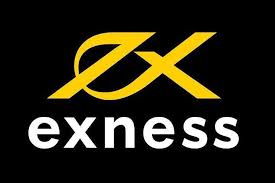
In the ever-evolving world of online trading, platforms are continually seeking ways to enhance their services and provide users with better tools for success. One such important tool available to traders is the Exness API Exness API. This application programming interface allows developers and traders to create custom trading solutions, streamline operations, and take their trading strategies to the next level. In this article, we will explore the Exness API in detail, examining its features, advantages, and how it can be leveraged to improve trading outcomes
What is the Exness API?
The Exness API serves as a bridge between the trading platform and various third-party applications, allowing users to integrate and automate their trading processes. Through this API, traders can access real-time market data, execute trades, manage accounts, and analyze performance metrics without needing to rely solely on the Exness trading platform. This flexibility is vital for creating a more tailored trading experience.
Key Features of Exness API
Several essential features make the Exness API a powerful tool for traders:
- Real-Time Data Access: The API provides access to live market data, including price quotes, trading volumes, and more, enabling traders to make informed decisions based on the latest available information.
- Automated Trading: Traders can create automated trading systems that use predefined strategies to execute trades automatically, thereby removing the emotional element from trading decisions.
- Account Management: With the Exness API, users can view account balances, monitor open positions, and manage their accounts efficiently without interacting with the user interface.
- Multiple Asset Classes: The API supports a variety of assets, including forex, cryptocurrencies, and commodities. This allows traders to diversify their portfolios through a single interface.
- Security Features: The API employs advanced security measures such as two-factor authentication and encryption to protect user data and transactions.

Benefits of Using Exness API
Adopting the Exness API can offer numerous benefits for traders, including:
- Increased Efficiency: Automating trading processes with the API allows traders to save time and reduce manual errors. This can be significant in high-frequency trading environments.
- Customization: Users can develop custom tools tailored to their unique trading strategies, enhancing their ability to react to market movements swiftly.
- Data-Driven Decisions: With access to detailed analytics and reporting features, traders can build data-driven strategies based on historical performance and market trends.
- Scalability: As traders grow, their needs evolve. The Exness API allows for scalable solutions that can be adapted as trading strategies or volumes increase.
- Integration with Other Software: The API can often be integrated into various software and platforms, allowing traders to synchronize their data across different systems.
How to Get Started with Exness API
Getting started with the Exness API is straightforward. Here’s a step-by-step guide:
- Create an Account: To access the Exness API, you must first create a trading account on the Exness platform.
- Access API Documentation: Upon creating your account, familiarize yourself with the API documentation provided by Exness. This documentation outlines how to authenticate requests, access data, and execute trades.
- Obtain API Keys: Generate your API key through your Exness account. This key is crucial for securely interacting with the API.
- Develop Your Application: Using programming languages such as Python, Java, or C#, you can begin developing your application or trading system that interacts with the Exness API.
- Testing: Thoroughly test your application in a demo environment to ensure that it performs as expected before going live.
Common Use Cases for Exness API
The versatility of the Exness API allows for numerous use cases, including:
- Algorithmic Trading: Implement algorithms that analyze market conditions and execute trades automatically based on predetermined criteria.
- Portfolio Management: Develop applications that track multiple trading accounts and assets, optimizing investment strategies across various asset classes.
- Custom Indicators: Build custom technical indicators that are tailored to specific trading strategies, providing an edge in decision-making.
- Market Analysis Tools: Create tools that aggregate and analyze market data, delivering insights that aid in effective trading strategies.
Challenges and Considerations
While the Exness API offers a myriad of opportunities, there are some challenges and considerations traders should keep in mind:
- Learning Curve: Developing applications using the API may require programming skills. Traders without technical knowledge might need to invest time in learning or collaborate with developers.
- API Limitations: Be aware of the limitations and rate limits imposed by the API to avoid disruptions during trading activities.
- Market Risks: Automated trading does not eliminate risks. Traders should remain vigilant and continuously monitor market conditions to mitigate potential losses.
Conclusion
The Exness API represents a significant advancement in the way traders can interact with the financial markets. Its robust features and capabilities allow for enhanced trading strategies and improved efficiency. By leveraging the Exness API, traders can better position themselves to meet their trading goals, whether through automated systems, customized tools, or deep data analysis. As the trading landscape continues to evolve, embracing technology like the Exness API will be key to staying ahead in the game. Whether you’re a seasoned trader or just starting, the Exness API is a valuable resource that can transform your trading experience.
